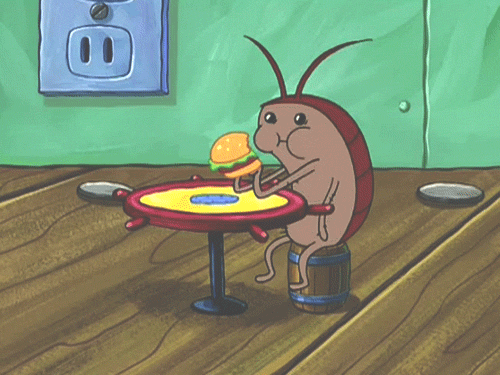Cockroaches Were There When The Continents Split Up, And Will Probably Outlive Us All.
If it's one thing that unites humanity, it's our disgust at all things cockroach. They deserve a bit of respect, though. It turns out they've been around so long, they barely had to lift a wing to spread across the globe – they just sat and let the drifting continents do all the work.
If we went by fossil records alone, we'd have unambiguous evidence that today's cockroach ancestors have scuttled over the planet's surface for the past 125 to 140 million years.

While there's plenty of evidence of cockroach-like creepy-crawlies dating back some 300 million years or so, none were so kind as to display their genitalia when they died – depriving researchers of one of the key features used to distinguish the order Blattodea from imposters.
As such, the question of just where we might find the last common ancestor of all modern roaches has been hotly debated.
A team of researchers has now used samples taken from specimens representing 119 living cockroach species to estimate how long today's populations have been evolving.
"Our results indicate that extant cockroach families have evolved over periods of up to about 180 million years," says lead author Thomas Bourguignon, now at the Okinawa Institute of Science and Technology in Japan.
Based on those figures, they were able to estimate that all of today's cockroaches –over 4,500 species worth – more than likely shared a common ancestor about 235 million years ago.
Not only does that provide some interesting information on cockroach evolution, Bourguignon and his team have taken this as evidence for a mode of global dispersal that could well be the laziest form of migration – the 'sit and wait for continents to simply drift apart' form.
Earth was a very different place back then. Days were shorter, the climate was warmer, and the continents were all still glued together in one big chunk of land called Pangaea.
Around 175 million years ago that supercontinent sized block was breaking apart into smaller sections, eventually splitting into the continental plates we're familiar with today.
"We believe that our results point to an important role for vicariance (continental drift) in determining the global distributions of cockroaches," says Bourguignon.
"On a global scale, the fossil record also agrees with our hypothesis."
Given cockroaches aren't exactly masters of the air and sea, this makes a lot of sense.
The fossil evidence suggests they already occupied much of the land mass. So the cockroaches simply sat tight for tens of millions of years, passing time by spreading filth and laughing at the eventual demise of the dinosaurs, just as they will laugh at the eventual demise of our own species.
Ok, so admittedly they're not all pests. Holding thousands of species accountable for the actions of a few dozen is probably a little unfair.
And we can't say they were all lazy. The researchers did admit finding evidence of some local transoceanic dispersal near Australia and Indo-Malaysia.
Really, we should be grateful these tiny animals are so perfectly adapted to sticking around – in a dystopian world we'll either be milking them for food, rigging them with microphones to find fellow apocalypse survivors, or mind-controlling them for the sheer fun of it.
So here's to another few hundred million years of cockroach happiness. May we still be around to see it.

Hi! I am a robot. I just upvoted you! I found similar content that readers might be interested in:
http://www.pda.sciencealert.com.au/cockroach-last-common-ancestor-supports-vicariance-drift-hypothesis
h014, s0y 31 b0t d3 @luiscordon, y0 r3g410 upv0t3s